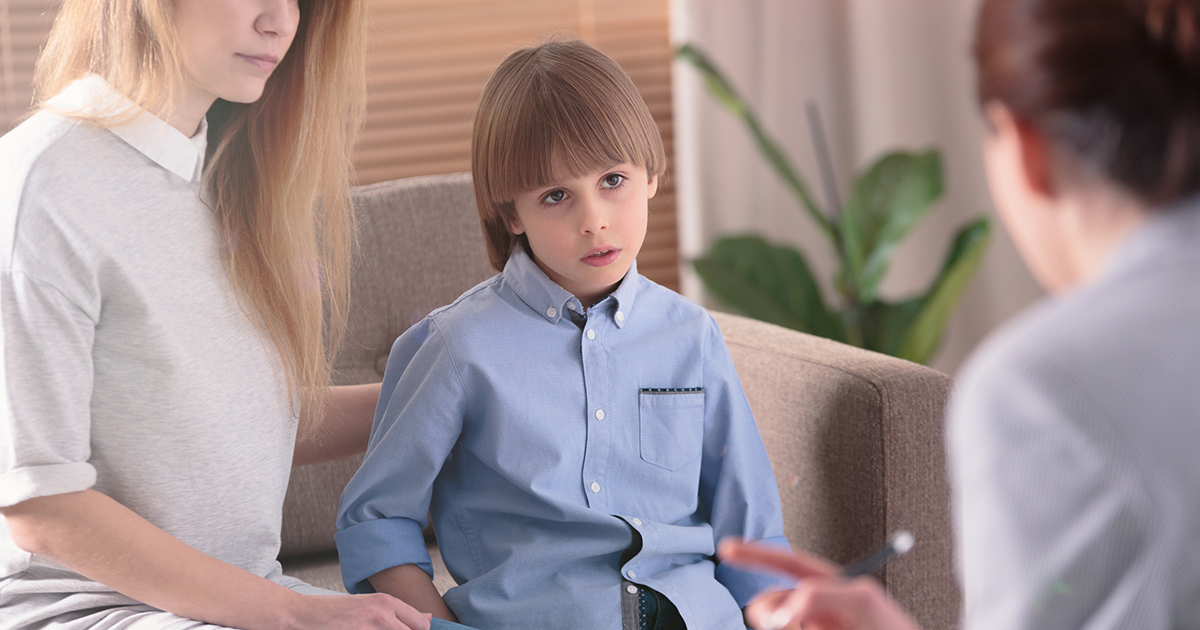Diagnosing And Treating Angelman Syndrome
Angelman syndrome is a genetic disease characterized by such symptoms as seizures, small head size, intellectual impairment, sleep problems, speech impairment, and difficulties with movement and balance. Parents generally notice their infant isn't developing normally at around one year old. Angelman syndrome can only be managed, not cured, though a patient's life expectancy is about normal. The disease is caused by damage to a gene located on chromosome 15. Most of the time, it's damage to the maternal chromosome copy that causes the problem. Rarely, Angelman syndrome can be caused when an individual inherits two paternal copies of chromosome 15, rather than one from each parent. Angelman syndrome is sometimes called happy puppet syndrome. This is because those afflicted tend to display jerky movements and sunny personalities. Get to know how Angelman syndrome is diagnosed and treated now.
Genetic Testing

Not all chromosomes inherited from two parents behave in the same way. In other words, genes located on a particular chromosome may behave differently depending on whether the gene came from the mother or the father. The gene called UBE3A is the one involved in Angelman syndrome. In average and healthy individuals, only the maternal copy of this gene is active in the brain. The paternal one is silent, or turned off. A damaged UBE3A gene, revealed by genetic testing, will cause neurological symptoms mainly because there is no active counterpart gene to take over its functions.
In most cases of a genetic disease, if an individual inherits a defective gene from one parent and a normal one from the other, the normal gene will take over the functions of the defective one. These individuals are known as carriers. Carriers can pass the defective gene on to their future offspring, but the carrier will be free of disease. However, because the paternal copy of the UBE3A gene is inactive in the brain, it only takes a defective or deleted maternal UBE3A gene to produce Angelman syndrome.
Get to know the next bit about treating Angelman syndrome now.
Behavior Therapy

Behavior therapy is used to modify negative behavior patterns seen in many types of mental health disorders. Children diagnosed with Angelman syndrome should receive therapy as soon as possible. The younger the child, the better the results will generally be. Children with Angelman syndrome often have agreeable personalities and smile and laugh a lot. However, they can also be aggressive and may have tendencies to want to hurt themselves, and many are plagued with sleeping disorders. A significant number show a peculiar fascination with water.
Behavioral therapy works on the principle that all behaviors are learned and can be unlearned. Therapists work with Angelman syndrome patients to help them focus on their negative behaviors and how to change them. For children, cognitive behavioral play therapy is commonly used. Therapists observe Angelman syndrome children at play to gain insight into their thoughts. For example, they may use toys to role-play with the child, helping them to learn socially acceptable ways to handle different situations.
Continue reading to reveal more about treating Angelman syndrome.
Physical Therapy

Physical therapy in general uses treatments such as heat, water therapy, massage, and certain exercises. It does not include drugs or surgery. Individuals who have problems with normal walking and balance have a condition known as ataxia. Ataxia is common among those afflicted with Angelman syndrome. Special exercises may help by increasing muscle strength and improving motor skills. They may also help with balance. Special types of braces are also part of physical therapy. In more severe cases, leg and foot braces may help the Angelman syndrome patient achieve better mobility. Scoliosis, or abnormal curvature of the spine, is common among patients with Angelman syndrome. Special braces can help to correct this curvature. Physical therapists are trained to fit all types of braces that may help patients with Angelman syndrome.
Get to know the next treatment for this condition now.
Communication Therapy

Individuals with Angelman syndrome often have severe speech impediments, and many are completely non-verbal. Without normal speech, it's challenging to communicate with others effectively. Some patients with Angelman syndrome are so severely linguistically handicapped that they must communicate with sign language. Picture cards are especially helpful with young children.
Communication therapy should be started as early as possible. Speech therapists and language specialists will evaluate the child and determine which method of communication will work best for each individual. For non-verbal Angelman syndrome patients, there are communication devices like Dynavox. Dynavox and similar devices use symbols that allow the patient to communicate with others verbally. They somewhat resemble a standard computer tablet with voice capability. Not only do they allow the patient to communicate clearly with others, but they help to create and build vocabulary. Users can even learn how to create the nuances associated with normal speech communication.
Learn more about managing Angelman syndrome by reading more now.
Coping And Support Groups

Living with a disease like Angelman syndrome isn't easy for the patient or their family and friends. Parents may feel alone. They may feel they have failed somehow, although it's certainly not their fault. Angelman syndrome is rare. It's highly unlikely parents of children with this disease know anyone else who has it, which only adds to feelings of isolation. However, numerous coping and support groups are available online. Some provide transportation, including by air, for patients who live far from medical facilities capable of treating Angelman syndrome patients. Others provide service dogs, and some help with obtaining medical insurance while others provide wearable tracking devices in case an Angelman syndrome patient wanders off. Some websites recommend products to make life with an Angelman syndrome patient easier. Some groups offer emotional and psychological support for caregivers. Other organizations focus on education and new developments for the disease. All in all, it's clear there is plenty of help available through coping and support groups.